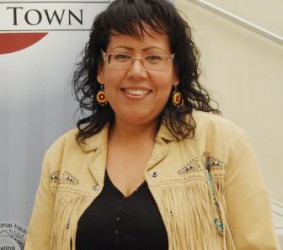Article Origin
Volume
Issue
Year
Cheryl Whiskeyjack would like to be shocked by recently-released figures that 741 children or teens, who had been brought to the attention of child welfare services in a variety of ways, died in Alberta from 1999 to June 2013.
“They’re new numbers to the public, but we’ve been working in this system for a while and whenever there’s been a death in care, especially when it effects our community, we always hear about it anyway, even if there’s a publication ban,” said Whiskeyjack, executive director with Bent Arrow Traditional Healing Society.
How many of these children are Aboriginal is not known.
However, Aboriginal children presently account for 60 per cent of those in government care. According to figures from the provincial Office of the Child and Youth Advocate, four times as many Aboriginal children are being served by child intervention services compared to their non-Aboriginal counterparts; six times as many are in temporary care; and eight times as many are in permanent care. Aboriginal children stay in care longer than non-Aboriginal children.
The death-figure released by the province refers to children who had a sibling or parent previously involved in the system (66); children whose files were no longer active with the department (341); children who were involved in an ongoing investigation (101); children whose families were receiving supports from the province (84); or children who were in legally in the care of the province (149). Of the 149 children legally in provincial care, 94 had their ethnicity recorded and 74 were Aboriginal.
The release of these overall figures is one of the first moves made by newly-appointed Human Services Minister Manmeet S. Bhullar. It also addresses a concern that is to be discussed at a roundtable scheduled for the end of January: what information should be shared with the public regarding serious injuries and deaths in care and who is to make that decision. The roundtable was a commitment made by Bhullar’s predecessor David Hancock, who now serves as deputy premier. Hancock turned down the push for a public inquiry, a move supported by Bhullar.
“Experts tell me that what we don’t need are … more reviews. We need to accelerate action on recommendations that have been made at the time,” said Bhullar.
A feature series jointly run by the Edmonton Journal and Calgary Herald last November revealed that the government had received 258 non-binding recommendations since 1999 through a variety of offices, forums and reports on how to improve the child welfare system.
Some of those recommendations have come from inquiries led by Child and Youth Advocate Del Graff. In Graff’s latest annual report, he stated, “I believe the Ministry of Human Services can and should take more concrete action on the recommendations made in my reports that will improve services and outcomes for vulnerable children.”
The Child and Youth Advocate began reporting to the Legislature as an independent officer in April 2012.
Deaths of children in care have only been reported to Graff’s office since April 2013. Whether this review system is adequate, Graff says it is still in the early days of the mandate to determine.
On Jan. 8, Bhullar announced the creation of an implementation team to prioritize responses to previous recommendations as one part of his five-point plan. The four member implementation team – with the fifth member, a legal representative, to be selected later – does not include Aboriginal representation.
But Whiskeyjack isn’t concerned about the team’s makeup.
“These were seen as people who have influence over the areas they come from,” she said. “People aren’t going to be excluded. There’s still an opportunity to participate in that process…. One of the reasons they invited us to take part is the work that we do at the grassroots level.”
Along with the roundtable discussion, Bhullar’s plan also calls for the government to consistently share information with the public to “ensure ongoing improvement;” enhance training, education and support for child intervention workers; and focus on the root problems.
Whiskeyjack, who stood with Bhullar when he made his announcement, is pleased the government will be addressing root causes.
“(Bent Arrow is) already doing that work and the exciting part for us is that the higher levels are taking notice and seeing that it’s really important,” she said. ‘It’s definitely an action-oriented plan and that’s what I really appreciate with it.”
Bent Arrow began 20 years ago with a focus on youth. It soon became apparent that for the organization to have an impact on young people, it had to broaden its scope to include families as a whole and to look at housing, education and employment.
“(Bent Arrow) comes at families from so many entry points, many of which aren’t even mandated,” said Whiskeyjack. “We have a good reputation for being able to do that. As an organization, we really do see our place in the (government’s) plan.”
Whiskeyjack expects the five-point plan to be reassessed as new needs are identified.
While she will be involved in the action side of the plan, she will not be participating in the roundtable.
“I have no interest in sitting at any table when it’s not an action-oriented table,” she said. However, she is confident that the work being undertaken by Bent Arrow and other organizations will be included in discussions.
Graff will be a roundtable participant.
“If the dialogue leads to recommendations that are acted upon then certainly it’s a value,” Graff said. “I’m hopeful that the dialogue that does take place moves us along. And sometimes it does … but we struggle sometimes to recognize when is there going to be action and when isn’t there.”
- 3367 views

